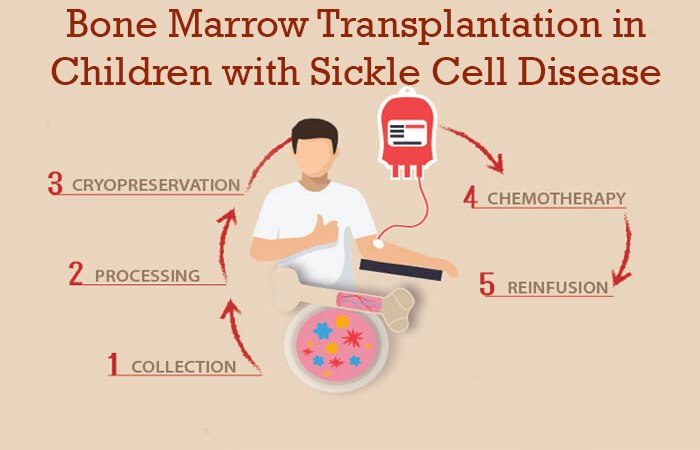Sickle cell disease has affected many families worldwide. This is the most commonly diagnosed disease in newborn screenings. African American children and Hispanic-American children are largely affected by this disease.
Sickle cell disease is a genetic or inherited blood disorder which affects the red blood cells that carry oxygen to different parts of the body. It occurs dues to a change in the genes for hemoglobin, a protein which binds oxygen inside the red blood cells. This mutation in the gene causes the cells to form a sickle or crescent shape, hence the name. The sickle shaped cells are more prone to clog small blood vessels and block the blood flow that supply the tissues and organs. The sickle cell disease can result in several complications, such as anemia, acute chest syndrome, pain crisis, and stroke.
Currently, Bone marrow transplantation (BMT) is the only known long-term cure for sickle cell disease. This is a medical procedure in which the abnormal stem cells in the bone marrow are replaced with healthy cells obtained from an eligible donor. It is also sometimes referred to as a stem cell transplant. Bone marrow is a sponge-like soft tissue found inside the bones. It comprises stem cells, the progenitor cells that are capable of renewal or producing cells that can differentiate into specialized cells. These cells produce all types of blood cells in the body, including the red cells, platelets and white cells. Children with sickle cell disease have bone marrow stem cells which produce abnormal red cells containing defective sickle hemoglobin. The stem cells from a healthy donor produce red blood cells that have normal hemoglobin while a child with sickle cell disease produces RBCs with hemoglobin-S. This hemoglobin S molecule causes the red blood cells to take on a crescent-shape which causes them clog the blood vessels and block the flow of blood.
A child is a candidate for BMT if:
- Complications associated with sickle cell disease such as stroke, frequent pain episodes, and frequent chest crisis are affecting the child
- An abnormal MRI or ultrasound of the brain
- Availability of a donor – a full matched brother or sister who does not have sickle cell disease and closely matching bone marrow
Donor
The blood test will be done for the patient as well as donor. This can be the child’s brothers and sisters, also called full siblings. One of the most important test is HLA matching test. In this, human leukocyte antigen (HLA) present on most cells of the body. This test improves the child’s chances of a successful transplant as it can help prevent rejection and graft-versus-host disease.
The best HLA-matched donor is usually a sibling who does not have sickle cell disease. The child’s each full sibling has a 25 percent chance of matching. The chances of complications are higher if the child does not have a matched sibling.
The donor does not need to have to the same blood type or gender as the patient, only the same HLA type. The blood stem cells from donor can be obtained from bone marrow, cord blood, or circulating peripheral blood.
This process is called a stem cell harvest. The peripheral blood collection from the veins is the most common method. In this, the donor is given a medicine which stimulates the movement of stem cell growth in the blood. The blood from the donor is drawn thorugh a vein, which then runs through an apheresis machine. This machine isolates and collects the stem cells from the donor’s blood and then transfers the remaining blood back into donor’s veins.
Bone marrow stem cells can also be collected through the pelvic bone. For this, the donor is put to sleep by general anesthesia. A small needle is inserted in the pelvic bone to collect the stem cells. The child can usually return home the same day once he or she awakens from anesthesia. The site from where the bone marrow is harvested may remain sore for a few days. The new healthy bone marrow cells quickly grow and produce healthy blood cells.
Many people travel to top medical travel destinations for BMT and other treatments. This helps them save money and have a high quality treatment. Bone marrow transplant in Turkeyhas a high success rate and can be performed for a variety of medical conditions.
Risks
Any medical procedure has some risks and complications associated with it. Bone marrow transplant can have complications, including severe infections and immune system problems.
Usually, the recipient’s immune system is weakened using medicines before the transplant, as the immune cells of the body may recognize transplant cells as foreign and attack the new stem cells, causing the transplant to fail.
Also, the donor’s stem cells has to be a close match with the recipient’s, otherwise the new immune cells produced by donor’s stem cells may attack certain organs in the recipient – a condition called graft-versus-host disease.

